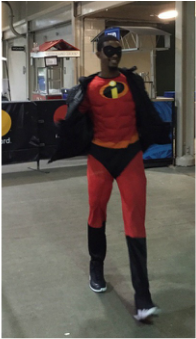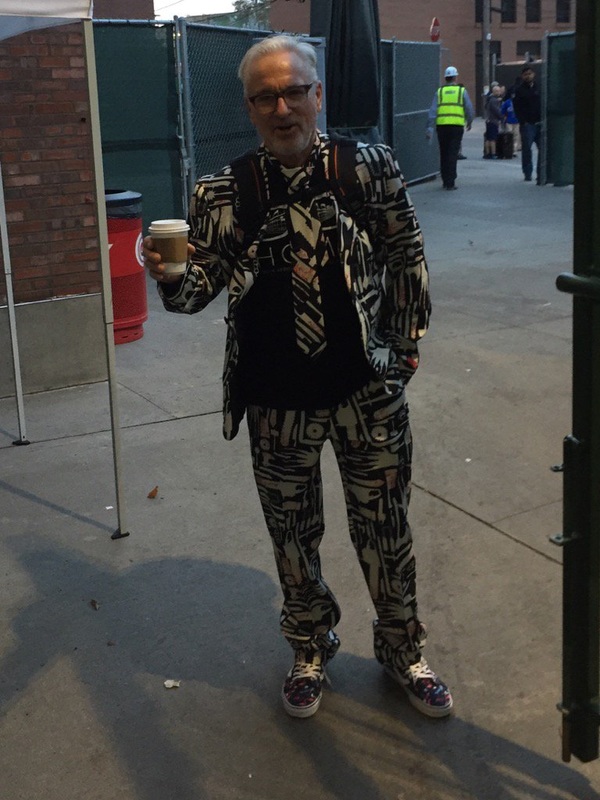|
(Note to readers: Please check out the lovely comment from Neil about his beloved grandmother, whose life spanned two epic eras in Cubs' history. In Comments below:)
* * * As soon as I saw the costumes on the web, I knew the Cubs would be loose going to Cleveland, needing to win twice. Still, how much is loose worth? By Wednesday night I was questioning manager Joe Maddon’s tropism to yank his starting pitcher. Normal. After the Cubs won on Sunday, to stay alive in the World Series, Maddon told his players to enjoy Halloween back home in Chicagoland. Never mind a workout in Cleveland on the travel day. Munch candy corn rather than clubhouse food. Maddon was cool when he managed Tampa Bay, an educated mixture of geek and free spirit. (See the 2008 article by Alan Schwarz:) http://www.nytimes.com/2008/08/10/sports/baseball/10rays.html. Maddon was also cool managing the team with the long void in its dossier. He didn’t need to exhibit football-coach control over his players. Play. Then play. This doesn’t imply anything negative about Tito Francona, the Cleveland manager. He’s good, too. But the Cubs needed to win two on the road, and Maddon showed proper insouciance by telling his players to take Monday off with loved ones, before boarding a flight to Cleveland – action-hero regalia optional. The photos on the web tell the story: http://m.mlb.com/cutfour/2016/10/31/207743190/cubs-wear-halloween-costumes-on-world-series-trip-to-cleveland The Cubs won Tuesday as Addison Russell, most recently seen as a lime-green Ninja Turtle, drove in six runs, tying the World Series record. On Wednesday, Maddon properly had all hands in the bullpen as Kyle Hendricks pitched into the fifth inning. Hendricks, known as The Professor, is smart and unflappable and had thrown only 63 pitches when Maddon got him with a 5-1 lead. The Fox crew questioned Maddon’s short-twitch strategy, even for a seventh game, and so did I. The questioning wasn’t so much about Jon Lester’s serious imperfections in throwing to bases as it was about using another very good starter that early, ultimately forcing Aroldis Chapman to go multiple innings, again. Turned out, Chapman was as spent as anybody could have feared. His face said he knew he didn’t have it. Then it rained, after nine innings. During the 17-minute delay, the player showing the most yips – Jason Heyward, in his first year with the Cubs, in a year-long slump, swinging at 57-foot pitches -- had the inner strength to call a clubhouse meeting, to remind the players how far they had come. Then the Cubs held on for an 8-7 victory in 10 innings, past midnight. One grand old baseball city celebrated and another mourned. Maddon had treated the players like grown men. Of course, so did Francona. Now the Cubs can wear any action-hero outfit they want for the parades and parties that may last all winter. Insouciance won. * * * Here's another article by Alan Schwarz about Joe Maddon from the Tampa Bay days: http://www.nytimes.com/2008/10/23/sports/baseball/23maddon.html * * * http://www.nytimes.com/2008/10/23/sports/baseball/23maddon.html
Altenir Silva
11/3/2016 12:34:26 pm
Dear George,
Neil Scherer
11/3/2016 02:30:08 pm
Congratulations to the 2016 World Series Champion Chicago Cubs and now the real reason for their long overdue quest is explained:
Altenir Silva
11/3/2016 03:07:55 pm
Dear Mr. Scherer,
Elliott Kolker
11/3/2016 10:29:03 pm
Poetic Legacy Comments are closed.
|
Categories
All
|












